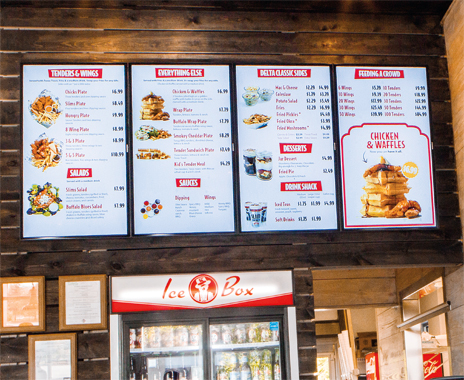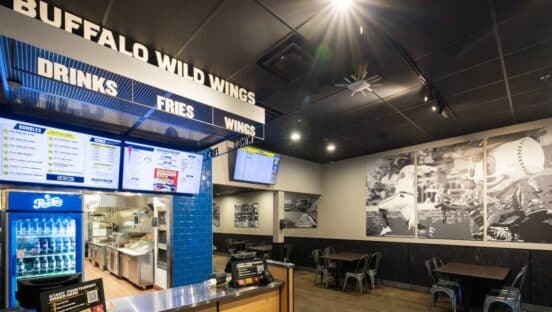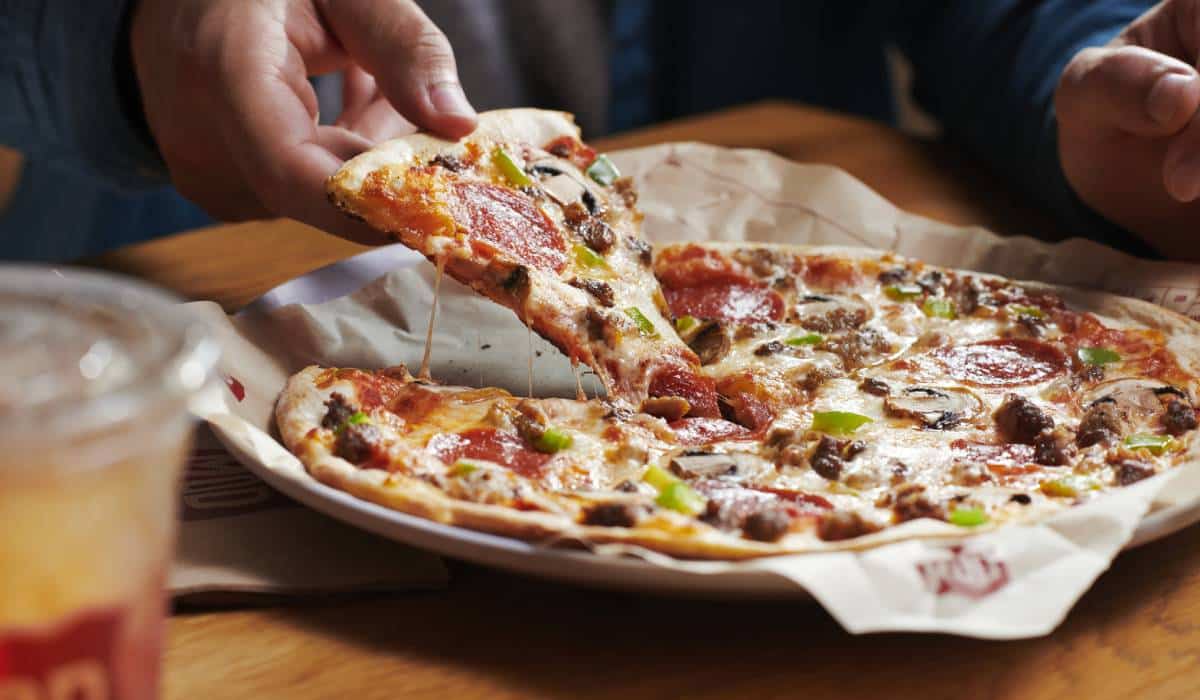Acquiring new restaurant technology can be a tricky business. Because of ever-decreasing prices, an operator may not want to be the first to buy a new application or software system. Plus, no one wants to invest in untested equipment, regardless of its technological prowess.
But, at the same time, if restaurants wait too long, there’s a real risk of getting left behind by both the competition and customers. Just as it has changed every other aspect of modern living, technology is constantly—and drastically—reshaping the quick-service and fast-casual businesses. From digital menuboards to online ordering to targeted social media campaigns, technology’s reach in the industry has never been more widespread. And there’s no question that all operators, regardless of size or segment, must have their hand in the game.
But industry insiders say that is easier said than done. Up until now, restaurant technology systems have remained somewhat fractured. Separate applications have handled separate tasks—mobile apps handle ordering, software systems track food and labor costs, online platforms manage marketing campaigns.
“The landscape of restaurant technology is unfortunately one where it’s very proprietary and the various systems don’t really talk to each other,” says Brad Chun, CEO of TechCafe. “It doesn’t really make it easy for the operator that’s running a restaurant to try to leverage technology.”
The digital revolution in the restaurant industry is starting to change that, though, and quickly. And operators must be prepared to take part in the changes.
TechCafe, run by former New York City restaurateurs, helps connect restaurants with various technology solutions. In operating their now-shuttered
fast-casual burger concept, 4food, Chun and his business partner Matt Sheppard realized just how daunting the tech landscape is for operators trying to keep up with the hundreds of new apps that roll out every day.
“When people think about technology in restaurants, you kind of start off with the point of sale,” Chun says. “But surrounding that central part of the technology ecosystem, you have loyalty, mobile payments, employment management, and supply chain management. There are literally hundreds of technologies that can help you out in your business.”
While some applications have found favor among operators for their ability to draw in new customers, Chun says, more applications are helping restaurants manage the massive amounts of data they collect—on customers, sales, and other trends. These tools use analytics to help operators make better decisions, engage customers, and manage efficiencies, he adds.
Tech companies now are working to integrate their various products so that restaurants can manage their data easier. “Eventually it will be simpler,” Chun says. “It’s just going to be a standard component of a restaurant, period. That’s why it’s a very exciting time to be in this space. The environment is changing every single day.”
Restaurants are anxiously awaiting those more harmonized systems. Greg Smart, cofounder of the 14-unit Slim Chickens, says whatever tool manages to bundle all of an operator’s needs into one platform will be a “game-changer” for restaurants.
“The biggest problem we find, even with digital menuboards, is getting everything to actually work together, to talk to each other,” Smart says. “It’s a challenge. Everybody seems to be great at one thing, but not multiple.”
The Arkansas-based Slim Chickens implemented digital menuboards two years ago. It started with 46-inch indoor panels and it’s now piloting the digital panels in the drive thru of a new Fayetteville store. The digital drive-thru setup is about two-and-a-half times as expensive as traditional menuboards, Smart says, so the corporate team is still studying whether the boards will be implemented systemwide. But with high-definition graphics, digital menuboards can fit more photos and prices, Smart says, giving the brand a better opportunity to communicate to the customer. In addition, with a cloud-based operating system, the corporate office or the restaurant can constantly customize the boards to rotate offerings or highlight certain promotions or higher-profit menu items. The drive thru and indoor counter can feature different items, and the restaurants can immediately post new promotions, whether it’s for iced tea on a hot day or a deal to celebrate the local high school football team’s win.
“It’s really fun, really exciting stuff to play with,” Smart says. “I feel like it’s really in its infancy.”
The digital boards have already posted measurable results for Slim Chickens. Customers’ order times have decreased, allowing the restaurants to increase their throughput. Promoted items are selling at higher rates than with the traditional menuboards.
Consumer-facing technology is often what garners the most attention in the restaurant business. Apps like OpenTable and GrubHub have become engrained in the foodservice business, and more brands are launching apps and mobile ordering systems. But technology in the back of the house is innovating just as rapidly, says Aaron Allen, CEO of global restaurant consulting firm Aaron Allen & Associates. Tech solutions offer sophisticated data tracking and graphing, whether it’s for human resources, scheduling, procurement, inventory control, or labor costs. Technology systems, often from the palm of a manager’s hand, are helping control costs and maximize efficiency.
This period of rapid innovation is important not just for restaurants, Allen says, but for all of humanity.
“Technology has fundamentally changed our lives, and irreversibly so. And, absolutely, it’s fundamentally changed the restaurant industry,” he says. “If you look at the evolution of human communication, we’re living in a point in time that’s as significant a milestone as the invention of language and the printing press.”
For restaurants, the goal shouldn’t be to simply catch up, he adds, because there’s no end in sight when it comes to technological advancements. Customers are used to—and now demand—accelerated innovation. Consumers expect Apple to come up with a new iPhone each year that makes last year’s version obsolete, Allen says, and they’re increasingly demanding that restaurants similarly innovate on a regular basis.
[pagebreak]
Mobile ordering is perhaps the most promising technology frontier as far as customer engagement goes, and experts say it’s now a must for restaurants, even for quick-service concepts that compete heavily on speed. Chris Webb, cofounder of ChowNow, which provides apps to restaurants for online and mobile ordering, says restaurants should look to the success of Domino’s app, which has helped the brand build loyalty and increase sales. Customers are demanding mobile, Webb says, because of its ease of use; mobile apps can store payment information and allow customers to order in advance. In 2013, nearly 70 percent of mobile users had placed food orders over their smartphones or tablets, according to a report from the Interactive Advertising Bureau and rewards provider Viggle.
“It’s convenience,” Webb says. “Unfortunately, restaurants have to compete on convenience. It’s no longer the case where you can just compete on food. It’s much easier to pull out the Domino’s app, pick what you want, and be done in 45 seconds. And because of that, it’s become a must-have for restaurants.”
A mobile app is just one piece of the Panera 2.0 effort, which is integrating mobile and kiosk ordering as part of Panera Bread’s technological revamp. Panera 2.0, which should be in about 100 stores by the end of the year, is set to completely roll out by 2016.
In participating stores, the new rollout is helping to alleviate long lines, says Blaine Hurst, Panera’s executive vice president of technology and transformation. Customers can order from their phones or tablets while they’re stuck in traffic or even when they’re in the store. They avoid the lines altogether thanks to tableside food delivery. Kiosk ordering works the same way, allowing customers to skip the line at the register for a do-it-yourself ordering experience.
“The guests love it. They absolutely love it,” Hurst says. “People don’t like to wait in line. We all know that.”
But the Panera revamp wasn’t just about upgrading technology—at least at first. Executives wanted more to approach the problem of long lines, especially at lunchtime.
“We didn’t start by saying we need a mobile app. We did not begin there,” Hurst says. “We started by saying, How do we solve for an improved and enhanced guest experience?”
Sales in the Panera 2.0-equipped cafés are increasing faster than in other comparable units. And by freeing up some labor at the register, those restaurants are able to invest a little more in ensuring order accuracy and quality, Hurst says. The brand has even added a video verification system to check orders leaving the kitchen.
Some might fret the loss of human interaction that comes with the addition of self-service technology. But Hurst says Panera is experiencing the opposite. By freeing up employees at the register, they’re able to focus more on quality. Team members now have that interaction at the table, as they deliver orders and any extras, like butter or sweetener, to the customer. Reducing the line by 20 or 30 people with mobile and kiosk ordering also drastically reduces stress for the employees and the guests, Hurst says.
“I would argue that’s a heck of a lot more personal experience than I get standing in a long line where the cashier is just trying to get past me,” he says. “I think it’s better for us and our customers.”
All aspects of commercial life, whether it’s self-checkout at the grocery store or mobile banking, are becoming increasingly automated and Web-based. And restaurants that do it right have a huge opportunity to create better labor efficiency, says Juan Martinez, principal and founder of Profitality, a foodservice consultancy.
“Any time you can take a task and give it to the customer, in the right way, you do it,” he says. “Any concept that’s not looking at customer-operated terminals or online ordering where the customer does the work, they don’t get it.”
Martinez understands those who take a wait-and-see approach to new technology. But he says waiting too long could force customers to leave for greener, more technological, pastures. Certain technologies, like mobile and kiosk ordering, have already proved themselves, he adds, and restaurants should be willing to act fast on implementing new systems.
“I’ll give you a phrase: You want to be on the leading edge, not on the bleeding edge,” he says, adding that this reality mandates a careful balancing act.
“There’s a fine line. You don’t want to wait too long and get left behind,” says White Castle vice president Jamie Richardson. “On the other hand, as a smaller chain, we can’t afford to be the first one in every arena.”
White Castle is piloting kiosk ordering at one of its Columbus, Ohio, stores, with plans to add it in other stores in the future. Richardson says the goal wasn’t to cut labor costs, but to improve the customer experience.
As with any purchase, he says, there must be a return on the investment with new tech acquisitions. But sometimes the return is less tangible—think guest satisfaction—than metrics like sales or speed of service. “We’re still learning and finding out how customers interact with it,” Richardson says.
With the influx of mobile tools, brands are also finding ways to maximize advertising and marketing dollars, primarily through social media campaigns. Milwaukee-based Cousins Subs is finding success with social media efforts that can target specific customers in specific markets.
“Television and radio aren’t always in front of our guests, but social media and mobile technologies are,” says Jordan Steinert, digital and social media manager at Cousins Subs.
During the back-to-school season, the 120-unit chain targets college students on Facebook or Twitter. And by using order history, the brand can offer coupon codes for a customer’s favorite sandwich through social media platforms.
“It’s more personalized and localized to that individual guest,” Steinert says.
Social media efforts push customers to Cousins’ online or mobile ordering systems. Collectively, the information the company collects from its mobile app, social media footprint, and online ordering helps to both reward and target customers better in the future.
“We want to be able to take that approach, reward guests for following, but also use opt-in programs to gain more information—first name, last name, preferred store, an SMS list,” Steinert says. “The more they engage, we can gain more data and paint that 360-degree picture of what our guest is and what our guest wants.”












